
views

Decide the reason why you want to keep sheep. Sheep are kept for a number of reasons - for reasons of earning a living from their wool, hides, meat and milk; for reasons of hobby farming to obtain organic homegrown meat and for their other products; for vegetation control; or to be a pet. Some people even like to raise sheep as a replacement for empty nest syndrome. It is important to understand from the outset that you cannot try to do everything with this multi-purpose animal because different breeds are more suited to one aspect or other and the pasture, feed and production practices will vary according to what you want the sheep for. Unless you have the necessary time, appropriate experience, adequate resources and appropriate pasture, don't over-extend!

Consider if you have the financial resources and time resources to raise sheep. Finances involved in setting up a sheep-breeding operation include the cost of the sheep, the cost of fencing, any feed required, vaccinations and vet checks and transportation costs. In addition, any requirement to stockpile food and provide a shelter for lambing and very poor weather needs to be taken into account.

Choose a breed within these categories: Wool breeds - Merino, Rambouillet, etc.; Meat breeds - North County Cheviot, Southdown, Dorset, Hampshire, Suffolk, and Texel etc.; Dual purpose breeds (both wool and meat) - Columbia, Corriedale, Polypay, and Targhee etc.; and Triple purpose breeds (milk, wool and meat) - mainly in Europe.

Decide how many sheep you will purchase. Where you are and the productivity of your land will determine how many sheep you are able to sustain. Additionally, if you are seeking to make a profit from the sheep, you will need to factor in the market prices and the likely returns. In many places, it is very hard to make a profit from sheep raising on a small scale. It becomes even more difficult when the environment includes a harsh winter and additional feed and shelter must be provided for the sheep.

Create a suitable environment for the sheep. Determine how much land you have available for your sheep. A rough rule of thumb is 5 ewes per acre.
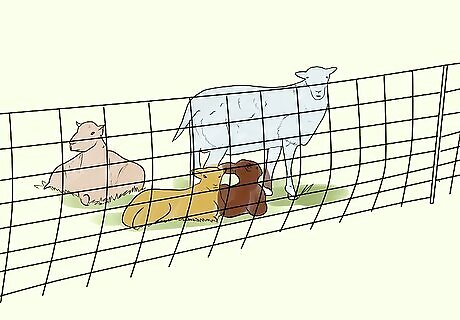
Some organic sheep breeders believe it is possible to run as many as 18 sheep per hectare. The pasture must also be productive. Provide adequate fencing around the area to prevent wandering and to prevent dog (tame and feral) or other animal attacks. Provide some form of simple shelter for the sheep - adult sheep are fairly hardy provided you have selected the right type for the weather in your region.

Order your chosen breed from a certified breeder. Purchase sheep breeds from recognized breeders. There should be a local or national sheep breeder's association that can assist you to find the names of breeders. Check online or in phone directories.
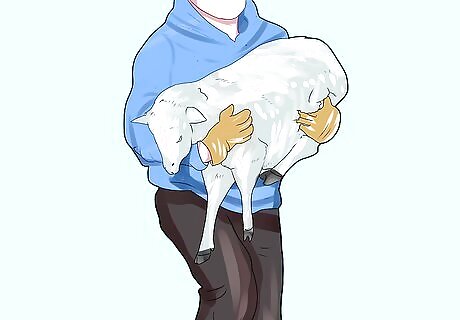
Bring your sheep home. If you can have the sheep delivered, this is obviously easier. If you must collect them yourself, hire or purchase a suitable sheep trailer for safe transportation. If you need to make several trips, make sure the breeder is not too far away from you or you may need to make arrangements for overnight accommodation for you and the sheep.
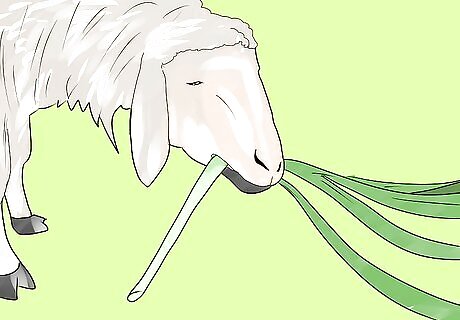
Feed them when required. The key to feeding sheep is to ensure good quality pasture. Poorer pasture should be supplemented with hay, specialized pellet feed and salt lick blocks. When sheep are unable to graze, such as during winter when snow is on the ground or during a drought when pasture is poor or non-existent, you will be obliged to feed the sheep daily. This is a time-consuming process, so consider this possibility if you are not farming full-time.
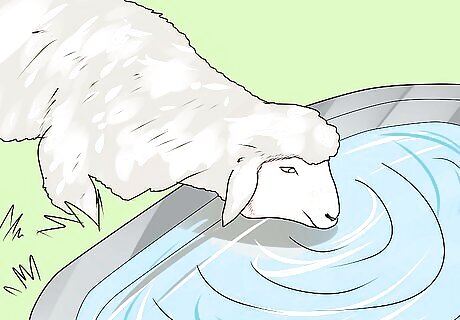
Make sure there is always fresh water. Ensure a steady supply of water, usually in the form of a long trough accessible by many sheep at once. Check regularly that the water is being recycled daily (if electrically driven by pump) or ensure to change the water by hand daily. If you don't they will get sick.
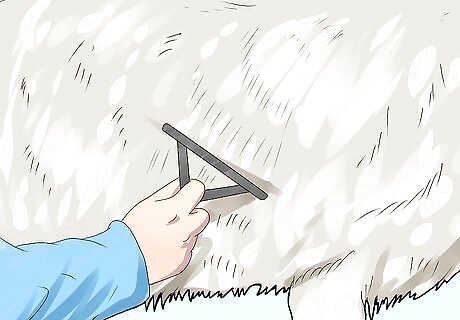
Comb them and wash the sheep regularly. If you are raising sheep for wool, showing, or as a pet, regular grooming ensures a healthy and tidy fleece.

Keep the sheep wormed and healthy. Ensure that the sheep are wormed regularly with a commercial worming paste suitable for sheep. Other considerations include dipping sheep to prevent pest infestation and in some places, tails are docked as a precaution against fly-blown disease. If you are in an area subject to foot-and-mouth disease outbreaks, take appropriate precautions to protect your sheep. Seek veterinarian advice on the best and most humane procedures for protecting your sheep against disease.




















Comments
0 comment